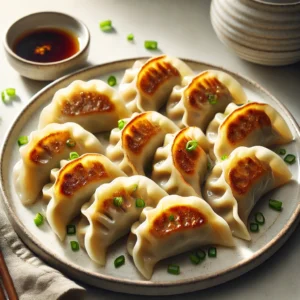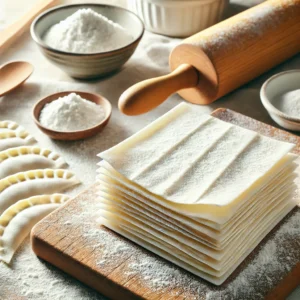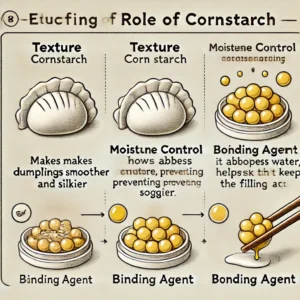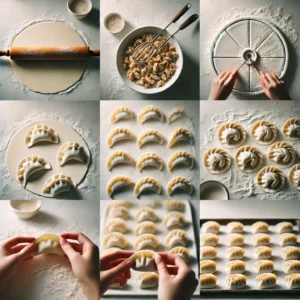Dumplings are a favorite in kitchens around the globe, offering chewy wrappers and flavorful fillings. But what’s the secret to making them flawless? The answer lies in one essential ingredient: cornstarch. By learning how to use cornstarch in dumplings, you can improve texture, prevent sticking, and keep your fillings juicy. For more on the science behind starch, check out this guide on starch properties. It explains how starch works as a thickener and textural enhancer in various recipes.
If you’re curious about other ways to perfect your dumpling recipes, this guide on fluffy chicken dumplings offers valuable tips. For more inspiration, explore biscuit dough vs. dumplings to discover creative alternatives.

Why Use Cornstarch in Dumplings?
Cornstarch serves multiple purposes in dumpling preparation, making it an essential ingredient for both the dough and filling.
1. In Dumpling Wrappers
Cornstarch plays a vital role in the preparation of dumplings. Here’s why:
- Prevents sticking: Keeps wrappers from sticking during rolling or cooking.
- Improves elasticity: Makes dough pliable and easier to work with.
- Enhances texture: Results in a tender, chewy wrapper.
Additionally, cornstarch helps thicken juices within the filling, ensuring every bite is packed with flavor. For more ideas on achieving flawless textures, check out bread flour for dumplings.
2. In Dumpling Fillings
Cornstarch ensures your filling stays cohesive and delicious:
- Absorbs moisture: Ingredients like meat and vegetables release liquids that can cause soggy dumplings. Cornstarch helps lock this moisture into the filling.
- Creates a smooth texture: Ensures a well-blended, firm filling that holds together during cooking.
For a variation using biscuit dough in dumplings, check out biscuit dough vs. dumplings to explore alternative methods.

Why Use Cornstarch in Dumplings?

Cornstarch plays a vital role in the preparation of dumplings. Here’s why:
- Prevents sticking: Keeps wrappers from sticking during rolling or cooking.
- Improves elasticity: Makes dough pliable and easier to work with.
- Enhances texture: Results in a tender, chewy wrapper.
Additionally, cornstarch helps thicken juices within the filling, ensuring every bite is packed with flavor. For more ideas on achieving flawless textures, check out bread flour for dumplings.

Common Mistakes with Cornstarch
While cornstarch is highly effective, it’s important to avoid these pitfalls:
- Overusing cornstarch: Excess can lead to clumping or a pasty texture. Use sparingly.
- Adding cornstarch to hot mixtures: Always dissolve it in cold water first to prevent lumps.
- Skipping pre-dusting: Failing to dust surfaces or baskets with cornstarch can result in sticky disasters.
FAQs About Cornstarch in Dumplings
Why do you use cornstarch in dumpling wrappers?
Cornstarch prevents sticking, improves elasticity, and creates tender, chewy wrappers.
Can cornstarch replace flour in dumpling recipes?
Yes, cornstarch can act as a substitute for flour for thickening and dusting, but it has different properties.
Is cornstarch necessary for crispy dumplings?
While not mandatory, cornstarch helps achieve a golden, crispy exterior when frying dumplings.
What happens if you don’t use cornstarch in dumplings?
Without cornstarch, your dumplings might stick, fillings could become soggy, and textures may lack refinement.
Are there alternatives to cornstarch?
Yes, tapioca starch, potato starch, and flour are common substitutes.
Conclusion
Cornstarch is a powerful ingredient that enhances dumpling-making by improving texture, moisture absorption, and stick prevention. Whether you’re aiming for perfectly crisp fried dumplings or tender steamed ones, mastering the use of cornstarch is essential.
Dive deeper into dumpling-making techniques with resources like 3 components of dumplings for a comprehensive understanding of creating delicious dumplings at home.
